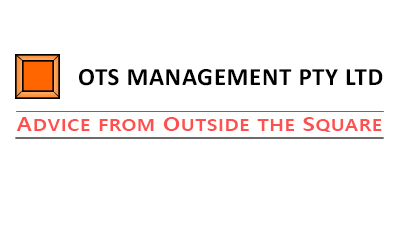All small businesses start in a very similar way, and I’ll bet you can relate to this story:
Jack and Jill started their small business just by themselves. They did most things together– they did the sales together, they discussed stock levels as they ordered stock, they worked side by side as they stacked the shelves, they took turns to write different pages of their website, they kept the books together, together they opened every morning and closed every evening.
Then they got busy as the business grew and they hired a store helper, Sue.
Sue was really keen and helpful, she mucked in and helped to do everything as well. In some things, all three of them were interchangeable as they looked after all the tasks in the business.
But things were starting to get missed because they got confused about who was going to do what. This didn't really matter because one of them would see the confusion and between the three of them they sorted it out.
Then the business became more successful and they hired Tom. Between the 4 of them, they did all the activities of the business as people could. If one was busy another picked up the slack.
But more and more things started to get missed. It was becoming a bit confusing as to who had done what and when.
Then, one day, they ran out of stock.
“I thought you were going to do that?” asked Joe of Sue.
“No, I was busy that day, but Joan heard we needed to do it so I thought she was going to.”
“Oh no,” Joan says, “Tom always does that on Thursdays.”
"I was sick last Thursday," said Tom.
Growing small businesses grow organically. They hire staff as and when they need them. But unless you get organised, things could fall between the cracks no matter how helpful and willing everyone is. Organisation means you know exactly who does what, how they do it and when, and who does it as a temporary replacement under certain, set, circumstances.
That way, there is no confusion.
Since 1979 I have been working with small business clients helping them to grow their businesses, and I can say from experience that the businesses who started to create an organisation structure from the very beginning are the ones most likely to succeed. That makes sense, doesn’t it? Organise your business so it doesn’t fall into confusion by designing it from the start.
I have taken my practical experience and applied it to Business School learning and come up with a clear process to design your "Organisation Chart" of positions and responsibilities.
An organisation chart is just a pictorial representation of how your people are organised.
You have seen them before, a reverse "tree" starting with the boss at the top and then divided into "departments" or logical groups of workers. The organisation chart shows you, at a glance, who reports to who and who is responsible for what. It helps you identify gaps in your staff structure, who to hire next, and what skills they should have.
Coupled with a series of "Job Descriptions" that explains what each person in the organisation chart does, their roles and responsibilities and their duties,l as well as who they work with and to what purpose, organisation charts and job descriptions means that you can see quickly who should be making the orders on Thursdays. If someone is sick, you can quickly work out who can stand in their place until they return, because all they have to do is read the missing person's job description and understand what they have to do.
It is best to start before you even have any employees. A well-organised organisation chart and job descriptions mean that you can "trial" the work of different positions until you have the resources to hire people to fill the positions. Then as you hire people to fill the empty positions, all you have to do is hand them their position job description and a copy of the organisation chart. You do not have to spend time inventing tasks and duties as people come on board, their roles are already defined, and you can tailor your job advertisement to find the right person for every position.
The process is a step by step exercise.
First, draw up your “Organisation Chart” or picture of the positions (not persons) who will end up in the business when it is fully grown. That is the key - design the structure of the business as if all the positions you need already exist.
Design the units or departments, or just areas of responsibility such as sales and marketing, books and administration, stocks and warehouse. Consider, and then include in the chart, all the positions for all the tasks that you will need to fill. Consider who does what, who they will need to work with, and who they report to.
Then, prepare Job Descriptions for each of the positions noting specifically in those written documents what the primary objective of their role is, what they are responsible for, what tasks they have to do, how they are to be measured, who they have to work with to accomplish their tasks, and who they report to.
Like most small businesses, even with this Organisation Chart, you the owner will start off doing everything and filling every position on the chart. Take that opportunity to write down procedures for all the tasks each position has to be responsible for and "trial" the job descriptions. Make amendments as you proceed so that you iron out conflicts and work out time that is needed for completion of tasks.
Then, as you expand and hire people, you have ready a Job Description and a tested routine that you can just hand over.
Let's say that when Jack and Jill hired Sue, they decided that she should take over the book-keeping and office management. This means that they can tailor the job advertisement to find the right person to do those tasks. When Sue arrived, all they had to do was to hand her the Job Descriptions for the Office manager and the Bookkeeper to her and she wears two hats.
Let's say later Sue becomes too busy to fulfill both jobs. Jack and Jill then decide to hire a bookkeeper. Knowing what this person does they waste no time to craft an advertisement looking for exactly the right person with the right skills. When that person arrives, Sue hands over the Job Description for the Bookkeeper.
If Jack and Jill had done this from the start, there would have been no mishap with the orders because they would have known who was responsible, and realising that Tom was away, could have picked up Tom's Job Description and filled in the gap.
As usual, the best happens after the story! Get over to the website at otsmanagement.com.au and tell me what your experiences are about this idea. While you’re there, subscribe and I’ll send you more free tips, tools and resources every week to help you create great strategy, show leadership, and grow your business.
If you want some help in developing your organisation chart and job descriptions for your business get in touch with me at my email or call out office on 08 9242 2085.
One final thing - this is the last article in The Square Orange business blog for 2018! Let me take this opportunity to wish you all a Merry Christmas and a Happy New Year, and hope you look forward to our next article for The Square Orange at the end of January 2019.




